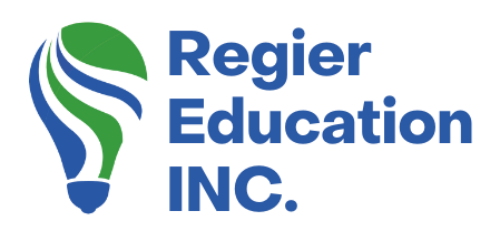Design Health and Safety training so it sticks!
Health and safety training is critical in fostering a safe workplace environment. Whether delivered in real-time with a facilitator or as self-directed, asynchronous modules, training doesn’t have to be boring. Here are strategies for designing both live and asynchronous health and safety training that capture attention, encourage participation, and ensure key takeaways stick.
Health & Safety Synchronous (Live Facilitated) Training Tips
Synchronous training allows real-time interaction between the facilitator and learners, making it an ideal format for discussions, Q&A sessions, and hands-on activities.
- Start with an Icebreaker or rather warm-up activities
- Begin with a short activity that connects learners to the topic. For example:
- “Share a safety moment from your workplace,” but facilitate this conversation so that it doesn’t get away from the instructor.
- “Guess the most common workplace hazard.” activity – drawing people into the topic and warm up the group.
- This encourages participation and sets a collaborative tone.
- Begin with a short activity that connects learners to the topic. For example:
- Use Visual and Practical Demonstrations
- Show real-life examples of safety protocols or equipment in use through videos or live demonstrations.
- Incorporate props or virtual simulations to explain concepts like PPE usage or fire extinguisher operation visually.
- Break Up Long Sessions
- Avoid information overload by structuring sessions into 15- to 20-minute segments: Bite-size and digestible information.
- Use breaks for quick polls, quizzes – when applicable, or safety-themed trivia to keep energy levels up.
- Encourage Active Participation
- Use tools like breakout rooms, live polls, or collaborative whiteboards to make sessions interactive.
- Assign small group discussions around specific scenarios like “How to respond to a chemical spill.”
- Invite Real-World Guest Speakers
- Bring in safety officers, industry experts, or workers who’ve faced safety challenges to share their experiences.
- Personal stories resonate more and often lead to better retention.
- Facilitator-led Q&A
- Dedicate time for open questions to clarify doubts and encourage dialogue.
- Use the “What if?” technique to discuss potential hazards and solutions tailored to the audience’s specific workplace.
- Gamify Participation – but not in a way where H&S feels like a game
- Offer incentives for participation, such as points for correct answers or contributions.
- Use real-time leaderboards or a “safety champion” award for active involvement.
Asynchronous (Self-Directed) Health & Safety Designed Training Tips
Asynchronous learning provides flexibility, allowing learners to engage with the material at their own pace. It requires thoughtful design to maintain interest and motivation.
- Interactive Scenarios
- Create branching scenarios where learners make decisions and see the consequences play out. For example:
- A warehouse worker chooses the wrong PPE, leading to a simulated incident.
- These make the learning experience immersive and practical.
- Create branching scenarios where learners make decisions and see the consequences play out. For example:
- Chunk Content into Microlearning
- Divide the course into short, topic-specific modules, such as:
- “Fire Safety Basics”
- “Ergonomics for Office Workers”
- Bite-sized content is easier to digest and more likely to be completed.
- Divide the course into short, topic-specific modules, such as:
- Utilize Multimedia
- Include videos, animations, and infographics to make content visually appealing.
- Use audio clips for storytelling or to present real-world safety case studies.
- Gamified Assessments – It’s about engagement and participation
- Incorporate quizzes, badge-earning challenges, and interactive puzzles to motivate learners.
- For example, a learner earns points by correctly identifying hazards in a virtual workspace.
- Interactive learning materials, instead of passive learning.
- Access to Supplemental Resources
- Provide downloadable guides, checklists, and quick-reference sheets that learners can use on the job.
- Offer links to relevant regulations or workplace-specific resources.
- Build In Self-reflection Activities
- Encourage people to talk about what they learned with others and encourage social learning.
- Encourage learners to think about their workplace practices by asking reflective questions like:
- “How would you handle this scenario differently?”
- “What is one change you can make today to enhance safety?”
- Regular Knowledge Checks
- Add quizzes or mini-assessments throughout the course to reinforce learning.
- Provide instant feedback to highlight areas where learners may need improvement.
Hybrid Strategies: Combining Synchronous and Asynchronous Elements
For maximum impact, consider blending both approaches:
- Pre-Live Work: Provide foundational knowledge through asynchronous modules before a live session. This ensures participants come prepared with a baseline understanding.
- Live Follow-Up: Use synchronous sessions to dive deeper into case studies, discussions, or role-play scenarios.
- Post-Session Reinforcement: Share asynchronous activities, such as interactive assessments or real-world challenges, to cement learning.
Engagement is Key
Health and safety training doesn’t have to be dry or formulaic. Blending interactive, multimedia-rich asynchronous content with dynamic, participatory synchronous sessions allows you to create a comprehensive learning experience that resonates with employees and inspires safer workplace practices.
Remember: A little creativity goes a long way in making safety training effective—and enjoyable!
__________________________
Ensure that your training is:
Relevant
Health and Safety training is not always an employee‘s favourite workplace learning topic. With adult education, the topic must be relevant to the learner for the best knowledge transfer. In other words, the topic must be critical for the employee to learn what is being taught. Many workplace health and safety training programs include videos demonstrating typical ‘accidents’ which can occur. Videos, and blended learning health and safety training are cost effective and efficient, however it is often a way to ‘check a box’, in that due diligence was accomplished. In-person training where conversations and sharing can occur are a more effective method, however this too is often ‘required’ training. When adults choose to learn, this is the best educational experience. Learners also must see themselves in the learning context and ensure that resources are accessible and inclusive, making the training relevant to everyone.
Timely
Workplaces should take advantage of ‘in-the-moment’ coaching, mentoring, training, and leadership opportunities when ‘near misses’ occur (based on research evidence). An ‘almost’ accident should be corrected immediately, and then LEARN from the experience. Sharing what almost happened can raise awareness among employees so that they can avoid workplace injuries. Just-in-time learning is meaningful because the employee cares when an accident nearly occurs, is willing to be part of the change, and chooses to learn from the experience. These real examples can also be incorporated into your instructional design of future training materials.
Engaging
Infection prevention, ergonomics, winter slips and falls, health and wellness, i.e., mental health in the workplace (to name a few), and awareness training issues can all be developed to be fun, interactive, experiential, and memorable. Examples of creative workplace training can include interactive group activities, games, discussions, stories, videos, handouts, and visuals. Developing and offering attractive educational opportunities in the workplace encourages employees to ‘want’ to learn.
Takes an Instructional Design approach
No matter the workplace training topic, learning and development should engage employees with quality training, raise their awareness, and be relevant. Workplace learning should occur in planned training experiences and in-the-moment coaching opportunities. When designing instructional materials and resources, consider the facilitator and the learner, plus the context of asynchronous or synchronous experiences.
Podcast and Related Videos
Author
 Patricia Regier, MEd is the Online Expert who’s built a career believing that training and online learning doesn’t have to be boring. As Owner of Regier Educational Services and with a Master of Adult Education, Patricia is known for making her audience feel empowered, engaged, courageous and confident. Her debut book and keynote, The Online Shift, teaches newcomers to the online space and seasoned professionals alike how to optimize their online presence and maximize engagement. She’s tried, tested and refined using the latest behavioural science, research and psychology to ensure your next online experience is a hit!
Patricia Regier, MEd is the Online Expert who’s built a career believing that training and online learning doesn’t have to be boring. As Owner of Regier Educational Services and with a Master of Adult Education, Patricia is known for making her audience feel empowered, engaged, courageous and confident. Her debut book and keynote, The Online Shift, teaches newcomers to the online space and seasoned professionals alike how to optimize their online presence and maximize engagement. She’s tried, tested and refined using the latest behavioural science, research and psychology to ensure your next online experience is a hit!
Get a copy of the book: THE ONLINE SHIFT: 101 Pro Tips for Online Facilitators, Digital Teachers, Workplace Trainers, Virtual Speakers & Online Meeting Leaders. https://www.amazon.ca/Online-Shift-Facilitators-Workplace-Trainers/dp/1778011152/




